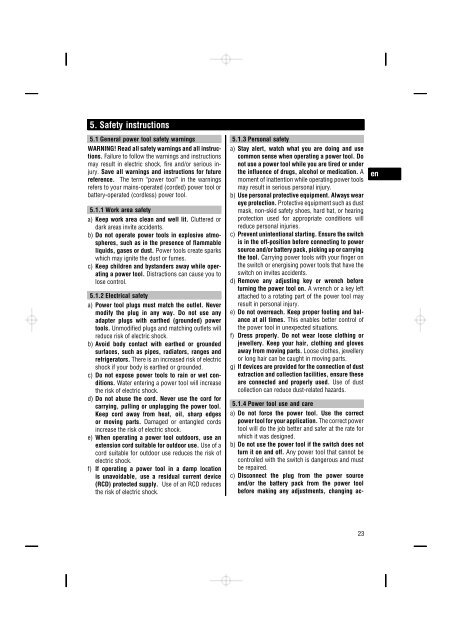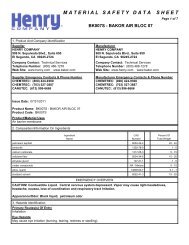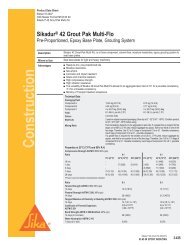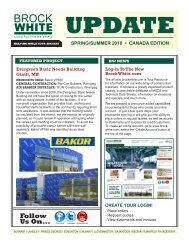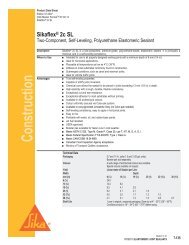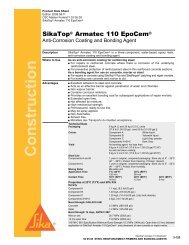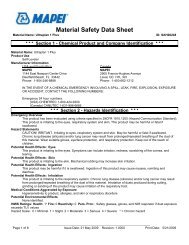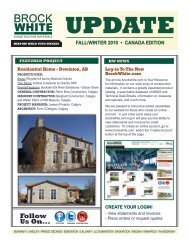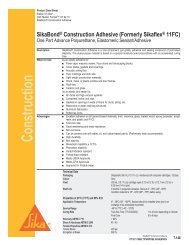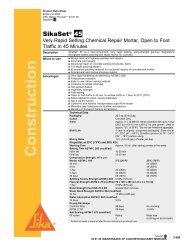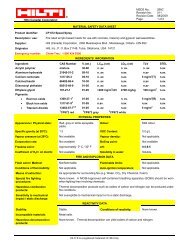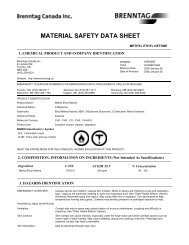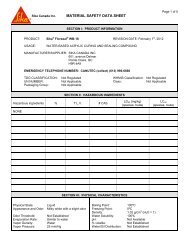Create successful ePaper yourself
Turn your PDF publications into a flip-book with our unique Google optimized e-Paper software.
5. Safety instructions<br />
5.1 General power tool safety warnings<br />
WARNING! Read all safety warnings and all instructions.<br />
Failure to follow the warnings and instructions<br />
may result in electric shock, fire and/or serious injury.<br />
Save all warnings and instructions for future<br />
reference. The term “power tool” in the warnings<br />
refers to your mains-operated (corded) power tool or<br />
battery-operated (cordless) power tool.<br />
5.1.1 Work area safety<br />
a) Keep work area clean and well lit. Cluttered or<br />
dark areas invite accidents.<br />
b) Do not operate power tools in explosive atmospheres,<br />
such as in the presence of flammable<br />
liquids, gases or dust. Power tools create sparks<br />
which may ignite the dust or fumes.<br />
c) Keep children and bystanders away while operating<br />
a power tool. Distractions can cause you to<br />
lose control.<br />
5.1.2 Electrical safety<br />
a) Power tool plugs must match the outlet. Never<br />
modify the plug in any way. Do not use any<br />
adapter plugs with earthed (grounded) power<br />
tools. Unmodified plugs and matching outlets will<br />
reduce risk of electric shock.<br />
b) Avoid body contact with earthed or grounded<br />
surfaces, such as pipes, radiators, ranges and<br />
refrigerators. There is an increased risk of electric<br />
shock if your body is earthed or grounded.<br />
c) Do not expose power tools to rain or wet conditions.<br />
Water entering a power tool will increase<br />
the risk of electric shock.<br />
d) Do not abuse the cord. Never use the cord for<br />
carrying, pulling or unplugging the power tool.<br />
Keep cord away from heat, oil, sharp edges<br />
or moving parts. Damaged or entangled cords<br />
increase the risk of electric shock.<br />
e) When operating a power tool outdoors, use an<br />
extension cord suitable for outdoor use. Use of a<br />
cord suitable for outdoor use reduces the risk of<br />
electric shock.<br />
f) If operating a power tool in a damp location<br />
is unavoidable, use a residual current device<br />
(RCD) protected supply. Use of an RCD reduces<br />
the risk of electric shock.<br />
5.1.3 Personal safety<br />
a) Stay alert, watch what you are doing and use<br />
common sense when operating a power tool. Do<br />
not use a power tool while you are tired or under<br />
the influence of drugs, alcohol or medication. A<br />
moment of inattention while operating power tools<br />
may result in serious personal injury.<br />
b) Use personal protective equipment. Always wear<br />
eye protection. Protective equipment such as dust<br />
mask, non-skid safety shoes, hard hat, or hearing<br />
protection used for appropriate conditions will<br />
reduce personal injuries.<br />
c) Prevent unintentional starting. Ensure the switch<br />
is in the off‐position before connecting to power<br />
source and/or battery pack, picking up or carrying<br />
the tool. Carrying power tools with your finger on<br />
the switch or energising power tools that have the<br />
switch on invites accidents.<br />
d) Remove any adjusting key or wrench before<br />
turning the power tool on. A wrench or a key left<br />
attached to a rotating part of the power tool may<br />
result in personal injury.<br />
e) Do not overreach. Keep proper footing and balance<br />
at all times. This enables better control of<br />
the power tool in unexpected situations.<br />
f) Dress properly. Do not wear loose clothing or<br />
jewellery. Keep your hair, clothing and gloves<br />
away from moving parts. Loose clothes, jewellery<br />
or long hair can be caught in moving parts.<br />
g) If devices are provided for the connection of dust<br />
extraction and collection facilities, ensure these<br />
are connected and properly used. Use of dust<br />
collection can reduce dust-related hazards.<br />
5.1.4 Power tool use and care<br />
a) Do not force the power tool. Use the correct<br />
power tool for your application. The correct power<br />
tool will do the job better and safer at the rate for<br />
which it was designed.<br />
b) Do not use the power tool if the switch does not<br />
turn it on and off. Any power tool that cannot be<br />
controlled with the switch is dangerous and must<br />
be repaired.<br />
c) Disconnect the plug from the power source<br />
and/or the battery pack from the power tool<br />
before making any adjustments, changing acen<br />
23


